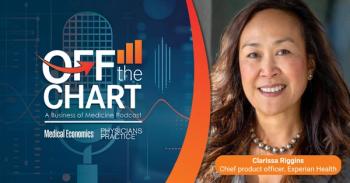
The New Payment Models
How to manage in the age of defined contributions and health savings accounts
As healthcare financing changes, physician practices must adapt, modifying their operations so they can thrive, rather than be thwarted by new payment models. For some practices, the newest crop of payment and benefit designs may lead to a resurgence of marketing activities and beefed-up office procedures as patients will have a broader choice of providers and will be increasingly aware of their healthcare costs.
First, some background. Private insurance carriers, self-insured employers, and some government entities have begun to offer new plans and embrace new concepts, which include defined contribution, health savings accounts (HSAs), high-deductible health plans, doughnut health plans, and noncovered services.
The concept of defined contribution has been implemented in a variety of forms. Generally, however, it works like this: an employer arranges with many carriers to provide benefits to employees, and defines a specific amount of money to contribute to the premium for each employee. The contribution is somewhat like a voucher that the employee can apply to his or her healthcare premium. If the employee chooses a plan that costs more than the employer's contribution, the employee pays the difference.
In the past, the insurance company's customer has been the employer; under a defined contribution, the insurance company's customer is the individual employee -- known to us as the patient.
HSAs provide a system for employers or individuals to contribute pre-tax money to a personal account; patients use funds from the account to pay for healthcare. Unused funds remain in the account and accumulate, surviving job changes and retirement. For example, funds in a HSA that are not used during a person's working years can be used in later life for healthcare and long-term care.
High-deductible health plans have deductible amounts, commonly between $500 and $2,000, to be paid by the patient. Some patients will reach the high deductible, but those that don't are essentially paying all their healthcare costs.
Doughnut health plans provide traditional benefits up to a certain amount ($1,000, for example) and nothing between that amount and a higher amount (for example, $5,000). Many healthy people may not reach the uninsured range or "doughnut hole" ($1,001 to $5,000 in our example) each year. To them, this coverage will appear as traditional coverage. A person with considerable medical expenses, however, may reach the uninsured range and need to contribute a substantial amount until the additional coverage begins paying.
Noncovered services have been a part of managed care for many years. Indications are that the number of services that are not covered by plans will increase. These are a blessing and a curse to physicians. On the one hand, practices need to separate noncovered services and charge patients the full fee, then bill payers for the covered services. But on the other hand, collecting payment for noncovered services is a good source of revenue. (Be aware: most plans allow physicians to charge full fees for noncovered services but some require physicians to apply discounts to them. Check your contracts!)
Changing patient perspectives
The new patient payment models will likely bring about changes in how patients approach their healthcare, as well as provide them with increased choices.
In the past, many patients had little concern for the cost of healthcare. The patient paid a $10 copayment and received $60 or even $260 worth of services. Now patients will be more likely to reach in their pockets or their HSAs to pay for services. It will also make a difference whether the services are covered or noncovered and whether patients have met their deductible.
Patients will increasingly make decisions about the care they choose to receive based on the perceived impact on their health and their finances. For example, since unused funds in HSAs remain in the account and accumulate, it is in the best interest of patients to conserve these funds. To do so, patients may ask more questions and choose cost-effective treatment even if it is outside the traditional delivery system.
Similarly, high-deductible and doughnut health plans and an increase in noncovered services are intended to encourage patients to take action to improve their health (if the condition is under their control) and get more involved in spending decisions.
Patient health may be negatively affected when patients are paying for a substantial portion of their healthcare out of their own pockets, or from their HSAs; they may avoid visits or opt out of lab work or treatment to minimize their personal expense or preserve the HSA. Physicians will need to educate and coach patients through these decisions, and pay attention to situations in which the patient is declining care for cost reasons. They should have strategies in place to address this kind of noncompliance.
As a result of having to pay for treatment from their own resources, patients may:
- Avoid making an appointment when mildly ill, which may increase the risk of a more complex illness
- Make the decision not to make appointments for prescribed tests
- Make the decision not to fill prescriptions
- Make the decision not to see a specialist as recommended by their primary care physician
- Make the decision not to return for a follow-up visit, or for routine visits (such as for patients with high blood pressure whom the physician wants to see semi annually)
When patients are paying for services out of their own resources, some may even shop around and consider two or three physicians before deciding which one to use, asking a lot of questions about cost and quality.
Patients will have greater choice in the type of providers they may opt to see, including physicians and nonphysician practitioners, such as alternative medicine providers. Some new patient payment models also include coverage for things like spa treatments, gym memberships, and nutrition classes.
In this scenario, physicians need to understand where they fit in the continuum of wellness and healthcare. You and your practice staff should attempt to occupy a lead role as the authority and coordinator for care, regardless of whether you deliver the care or others do. Ask patients to let you know about the care they receive from others, and maintain professional relationships with these other providers.
As these new plans give more power to patients, practices will need to do more marketing and community outreach to retain and attract desirable patients. Let patients know why yours is the preferred practice. Consider expanding services or your office hours, for example, to gain the edge over other practices in your area. If you need to attract new patients, mail postcards to addresses within a target ZIP code, or sponsor talks at senior centers and schools. Again, strong relationships with referring physicians are key: send them thank-you notes and prompt follow-ups when you see their patients.
Back it up with data, service
To be ready to answer patient queries, physicians' offices can collect data on less expensive alternatives, volume of procedures performed, and outcomes, including rates of complications.
Practices that have data demonstrating competence in a certain area should use it to promote themselves. Offices that can claim, for example, that "96 percent of patients are seen within five minutes of their appointment time" or that "98 percent of stent-implant patients do not later need bypass surgery" will have a competitive advantage.
Use data analysis to improve existing strategies or develop new strategies. If this is a new approach for your office, you may consider getting guidance from a financial adviser or other independent professional.
When patients have more choice, issues such as appointment availability and timeliness, staff courtesy, and proper billing become much more important.
New payment models will force practices to tighten and more closely monitor their collection policies as more money will come directly from patients. If practices are sloppy about collecting from patients, they will not be just forfeiting a $10 copayment, they might be forfeiting $132 for the full visit. As a result, accounts receivable may dramatically increase as will the expense of patient collections.
Most practices have a policy that payment is due at the time of service, but need to do a better job of enforcing it. At check-out, charges must be tallied, and the patient portion of charges calculated and collected. Do not let patients leave the office with "Bill me later." If collecting becomes a problem, you might consider charging patients $20 if payment is not made at the time of service; have the patient sign an agreement to pay the billing charge so that he or she can be seen without being rescheduled.
Similarly, as benefits and plan options increase, office staff and patients will need to understand the terms and conditions of each, including eligibility, covered and noncovered services, deductible thresholds, how to determine if the patient's deductible has been met, and how to calculate the patient portion of charges.
State your practice's financial policies, collection procedures, rescheduling policies, and billing charge policies in patient brochures, on the wall of the waiting room and in exam rooms, on Web sites, and through mailings.
That's good customer service, and just the type of strategy the new payment models and benefit concepts demand in an increasingly competitive healthcare marketplace.
Paul Angotti, BS, is president of Management Design, LLC, a company that helps physicians to establish and maintain financial and operational control of their practices. He can be reached at
This article originally appeared in the Janaury 2005 issue of Physicians Practice.
Newsletter
Optimize your practice with the Physicians Practice newsletter, offering management pearls, leadership tips, and business strategies tailored for practice administrators and physicians of any specialty.









